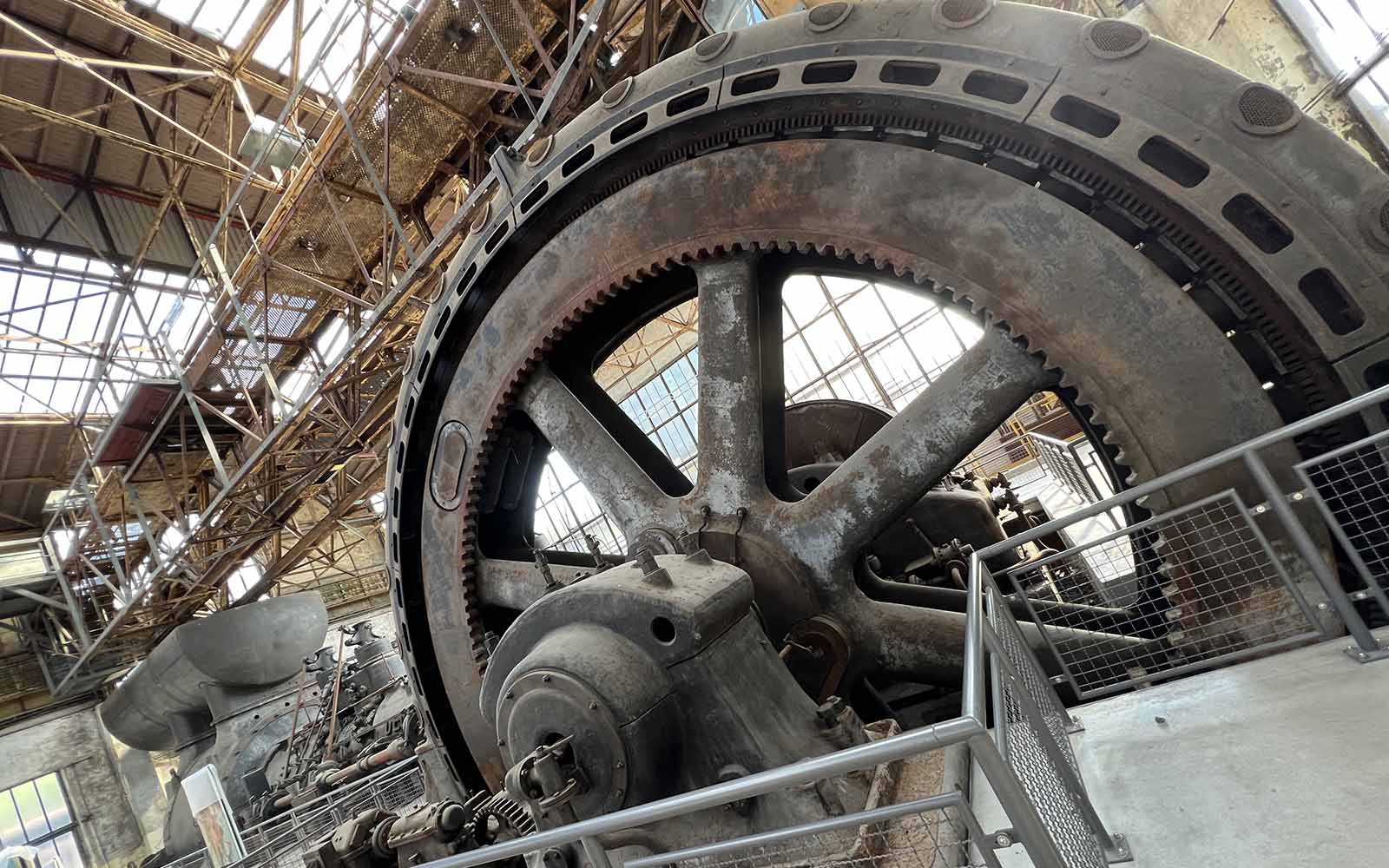
Industrial relics inside the Henrichshütte Iron and Steel Works in Hattingen, Germany.
Rivers of Steel in the Ruhr Valley
Augie Carlino, president and CEO of Rivers of Steel, shares an overview of the recent visit to Germany’s Ruhr and Emscher Valleys by members of the organization’s staff.
By August R. Carlino
Post/Industrial Ambassadors
Earlier this month, members of Rivers of Steel’s staff embarked on journey to Germany’s Ruhr and Emscher Valley regions, where we were hosted by the LVR-Industriemuseum and the Regional Association of Westphalia-Lippe—two quasi-governmental entities that are responsible for Germany’s industrial and cultural heritage projects.
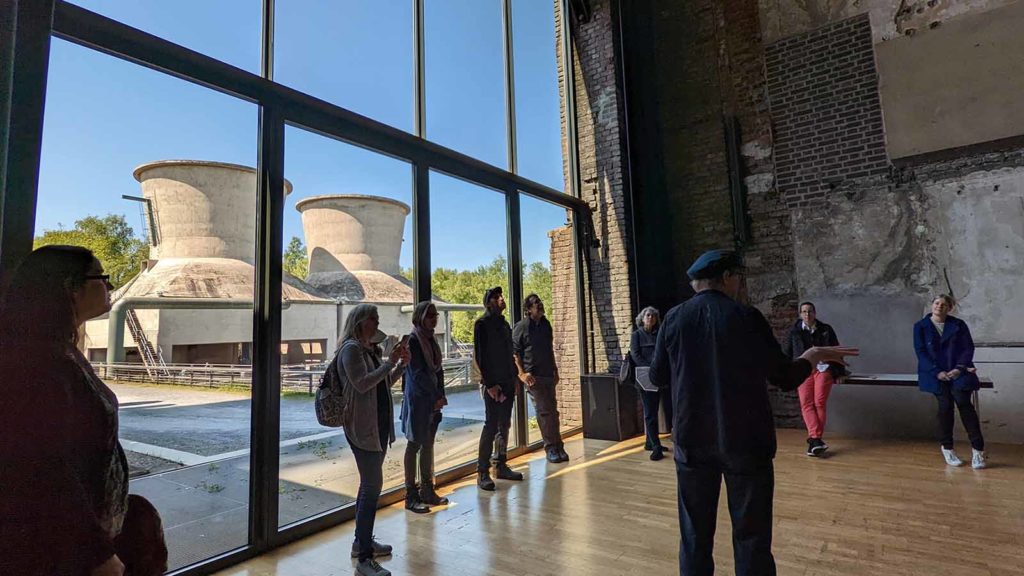
Rivers of Steel staff tour Jahrhunderthalle Bochum, a former gas power station that is now a state-of-the-art performance space.
This region of Germany is remarkably similar to southwestern Pennsylvania as it was—and still is—the nation’s industrial heartland. Like our region, it saw a change in its industrial economy in the 1970s and ‘80s as global steel production shifted to Eastern Europe and Asia. Unlike our region, however, the German government quickly recognized the value of industrial culture. As a result, it established strategic, planned reuse of the former sites, incorporating the historic structures into their reuse and redevelopment.
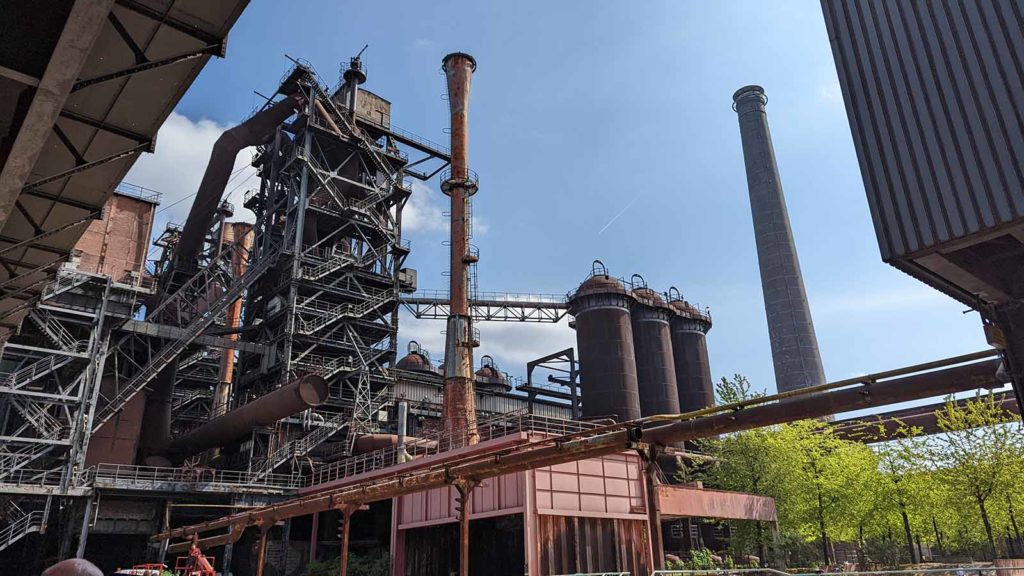
Landschaftspark Duisburg-Nord is a public park located in Duisburg-Meiderich, Germany. It was designed in 1991 by Latz + Partner, with the intention that it work to heal and understand the industrial past, rather than trying to reject it.
During our trip, we visited about a dozen former industrial sites. Now stripped of their former roles, they have found new postindustrial purposes, operating commercially, culturally, and recreationally. These sites included former steel mills with blast furnaces, coking plants, and coal mines. In addition, we toured industrial communities connected by the Emscher and Ruhr rivers. Like Pittsburgh and southwestern Pennsylvania, these communities are connected by a trail system that parallels the rivers and canals of the region. And we stayed in Essen, Germany. Does that sound familiar? It is where the name for the town of Monessen originates—Essen on the Mon!
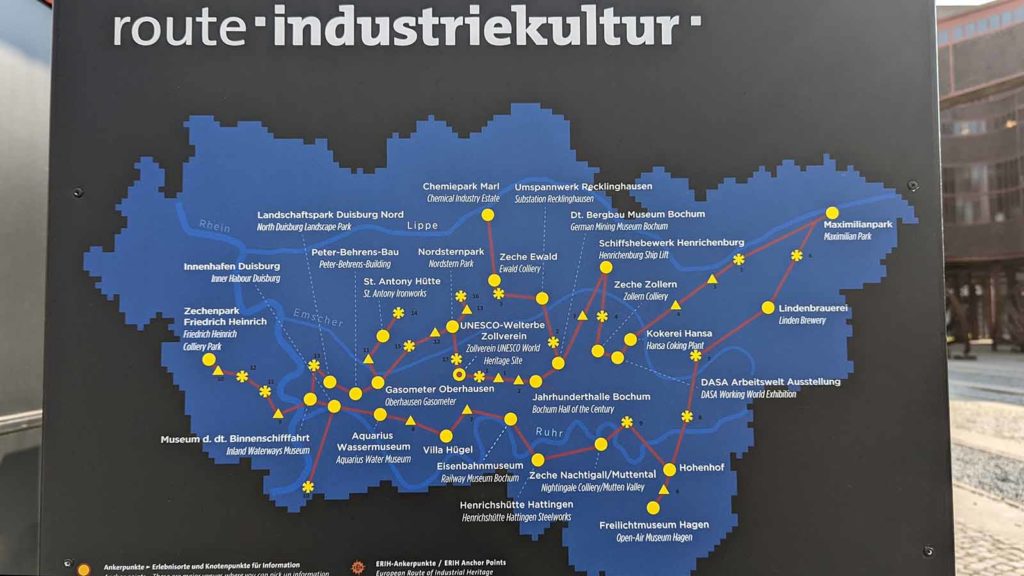
A sign displaying the industrial culture route through the Ruhr Valley.
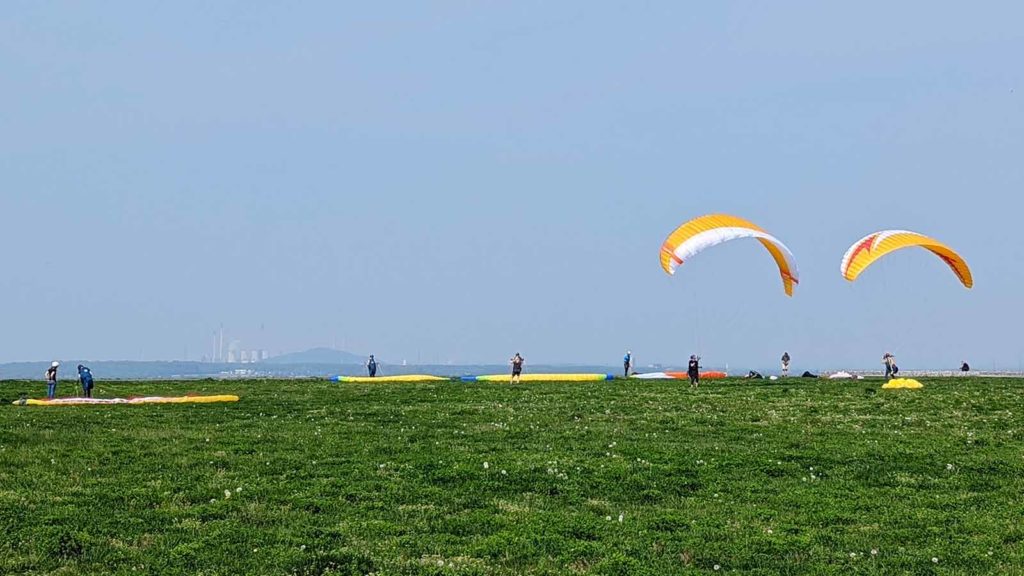
Paragliders practice at the Hoheward Landscape Park—the largest slag heap in Europe that is now a recreational space.
Rivers of Steel and these two German agencies are working to develop an international partnership to advance industrial heritage and preservation efforts within the U.S., Germany, and in other countries. As part of this work, Rivers of Steel has been invited to join the International Committee for the Conservation of Industrial Heritage (TICCIH). In addition, Rivers of Steel’s metal arts staff will return to Germany in September to participate in a European metal arts demonstration conference to be held in Berlin.
Over the next weeks and months, Rivers of Steel’s staff will share their takeaways—things we learned and observed during this process. Beyond that, we’ll convey some of what our German partners were able to gain from the exchange with us, as we forge new partnerships via our work in conserving industrial heritage.
 August R. Carlino is the president and CEO of Rivers of Steel. Read his bio.
August R. Carlino is the president and CEO of Rivers of Steel. Read his bio.







